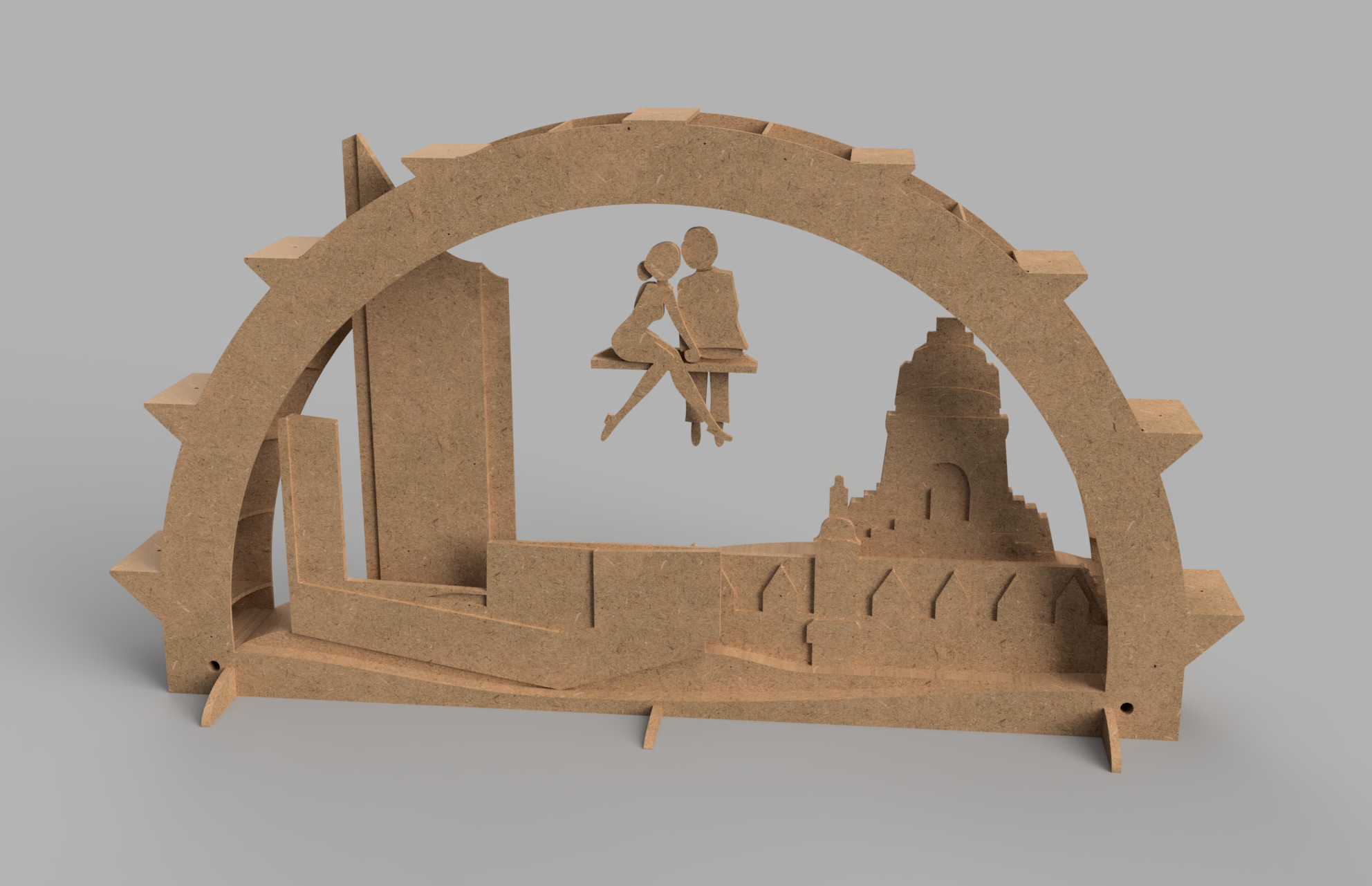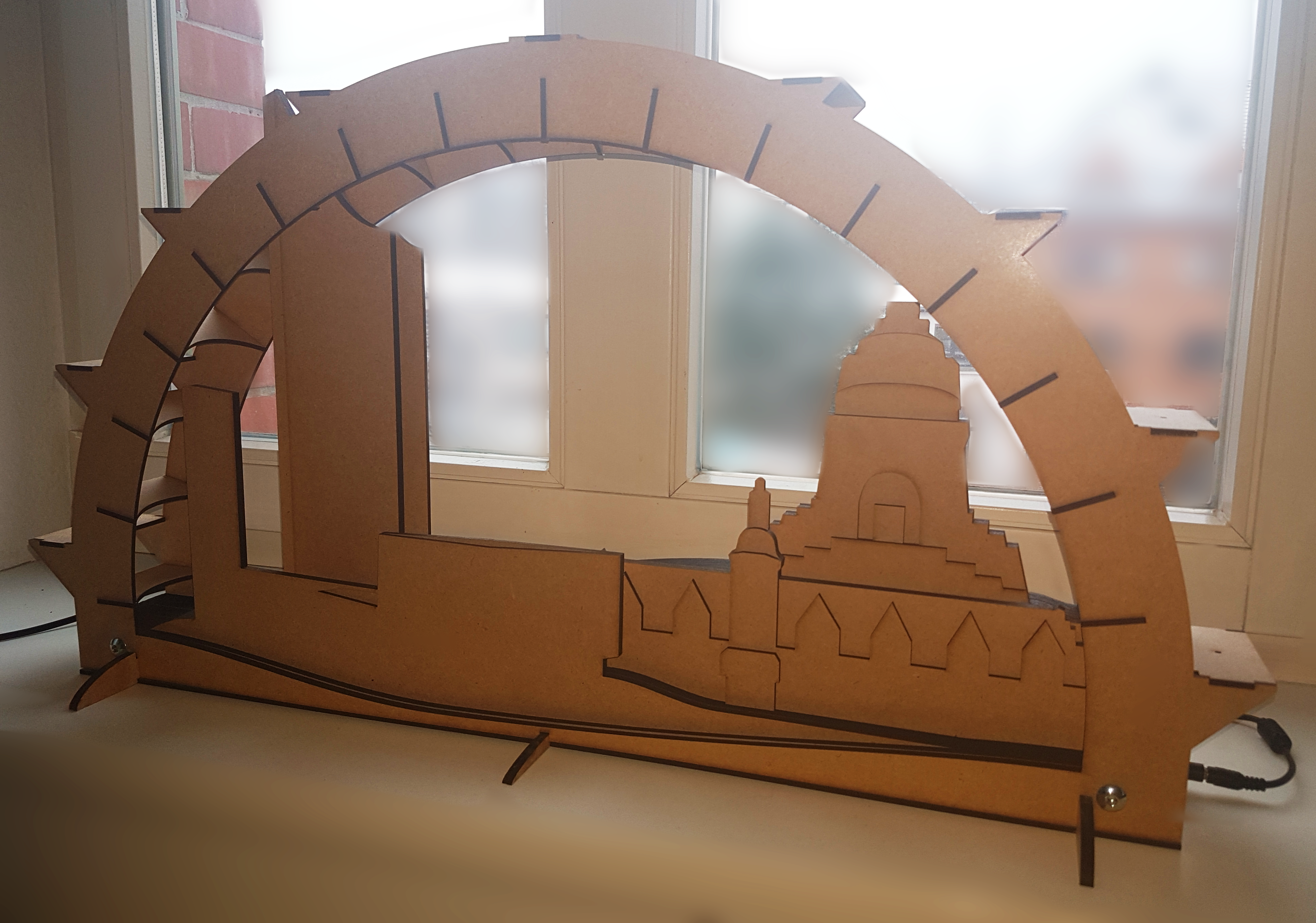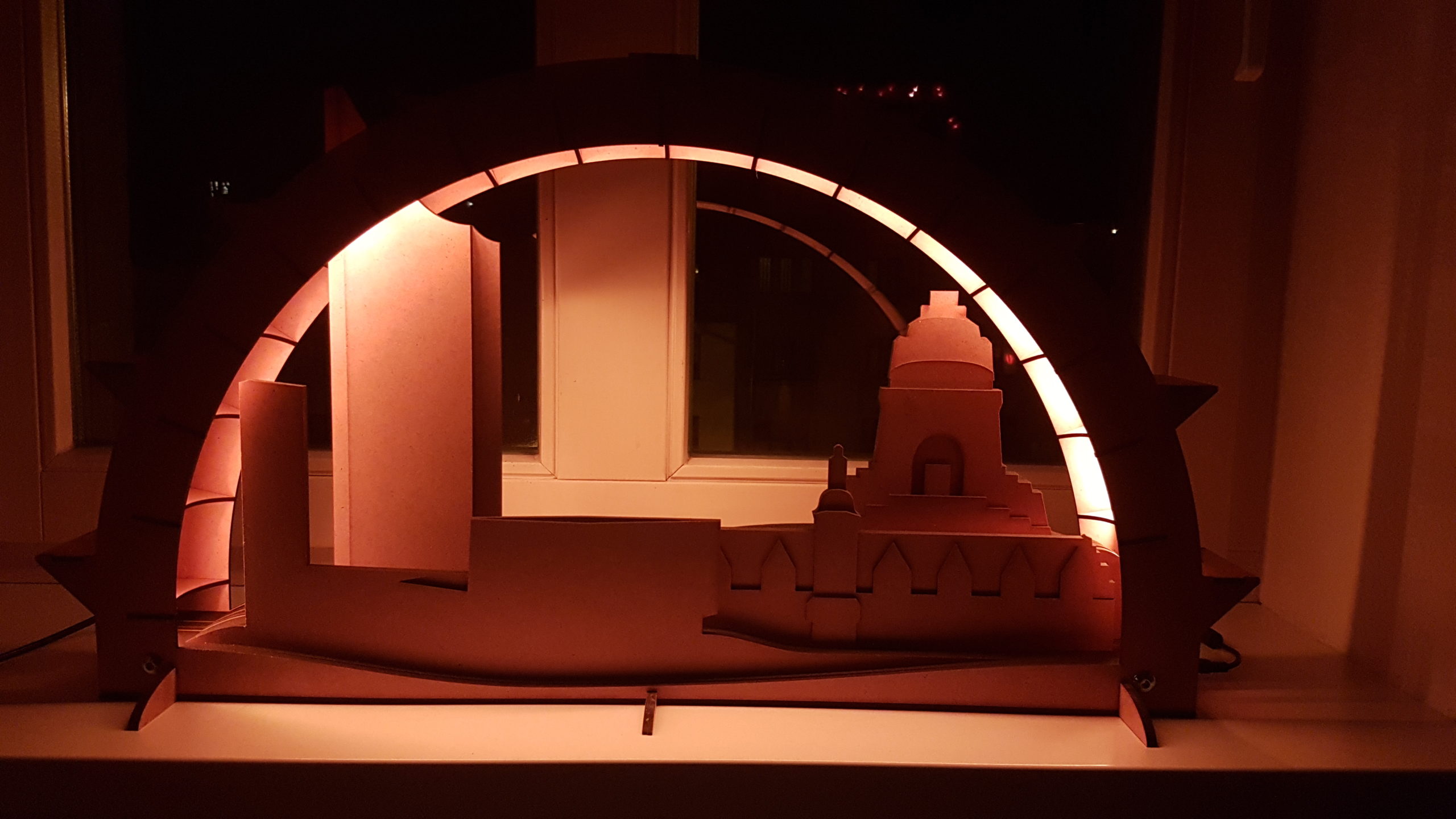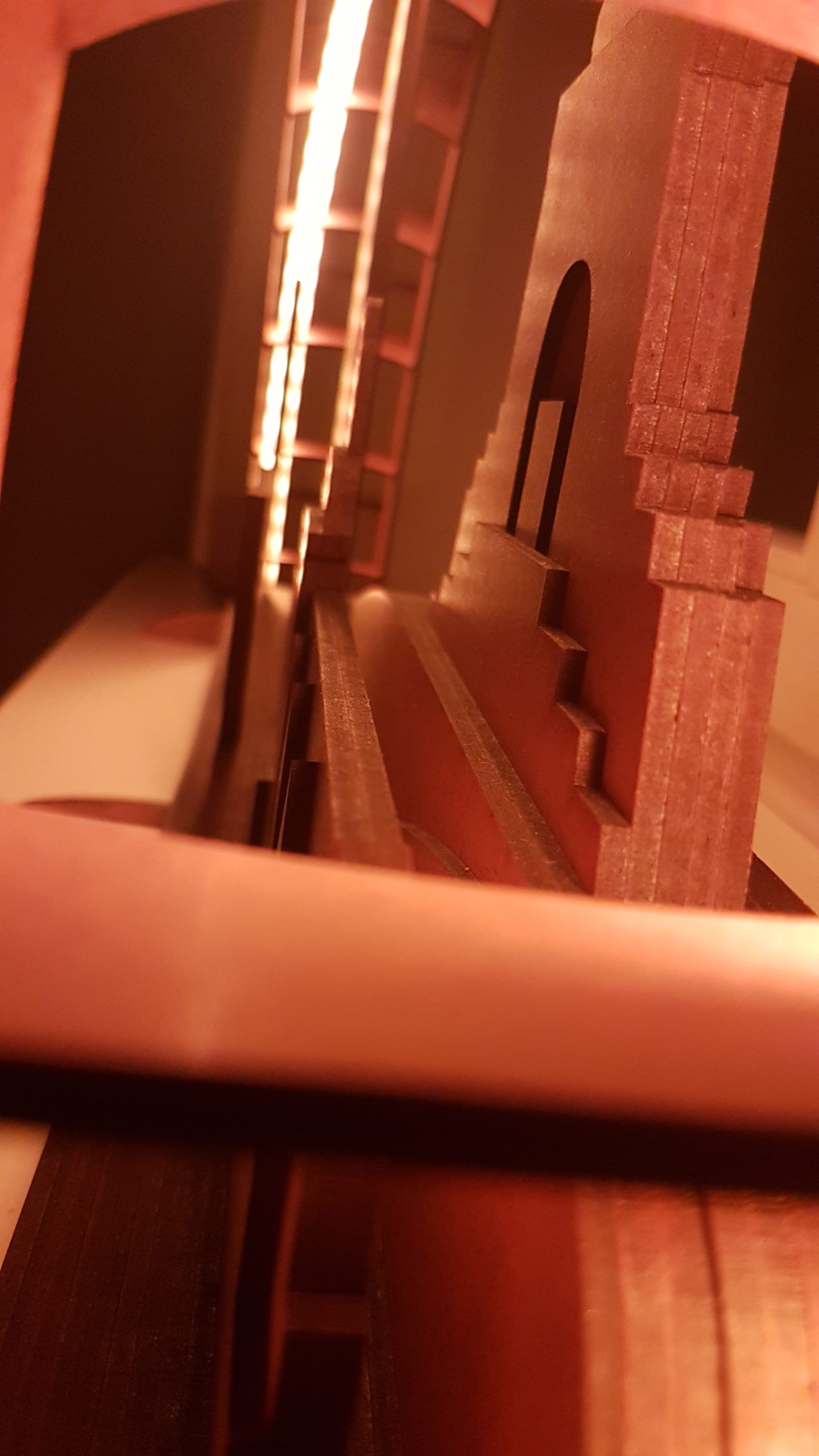These so-called Schwibbogen are traditional candle holder arches from a region near my hometown. The creation of those Schwibbogen has been traditional craftsmanship in the Saxon Ore Mountains for about 300 years. Nowadays, they are sold all over Germany at our annual Christmas Markets. Original Schwibbogen can cost a view hundred Euros, as their construction involves a lot of manual work like carving.
Due to those prices, I never considered buying one for myself. Furthermore, I was never interested in the traditional themes that most original Schwibbogen display. However, in recent years, the trend changed a bit and new scenes were produced and sold.
By chance, I noticed, that the laser cutters in my local Maker Space were almost completely blocked during the weeks in December. As I was on-site due to my other projects, I saw that a lot of visitors using the machines to cut some kind of Christmas presents. This also included lasercut parts for Schwibbogen sometimes. Over Christmas and New Year I talked to friends and family about these peculiarities and I got a lot of feedback from people, requesting a custom lasercut Schwibbogen for themselves.
Unfortunately, I did not have enough time to design multiple Schwibbogen due to the pandemic and my ongoing Master Thesis. But I managed to design at least one for myself.
I did not want to have a traditional scene on my Schwibbogen. Instead, I decided to go with a panorama view of my hometown Leipzig including 4 representative buildings. Using my favorite 3D modeling tool Fusion360, I copied frontal images of the buildings into my sketch and carefully traced their edges. Then, I created several stacked layers from those areas to create the impression of real 3D buildings. I arranged the buildings behind each other to create a scenic view. The arch is comprised of two large arcs and a lot of connectors in between. On the upper side, it can house 9 electric candles to resemble the traditional appearance of a Schwibbogen. On the inside, it houses a modern LED strip to light the scene.
The LED strip is comprised of SK6812 LEDs with digital RGB capabilities. Their color can be individually controlled from a microcontroller. I connected the strip to a NodeMCU ESP-32 board. It is flashed with WLED, which is open-source software for WiFi-capable microcontrollers. It offers web- or app-based access to remotely control the LEDs and common effects. The whole system is power from an external 5V power supply as the LED can draw up to 3A.
The plans are available upon request:


